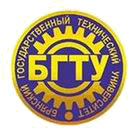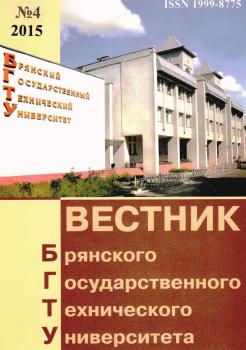The work purpose: a systematic (constant) clas-sification of finite elements for designation unity, the exclusion of repeated investigations and results dupli-cating. Methods. A decimal nomenclature dncmkot code for finite elements is offered. It is based on the geometry and structure presentation of node coordinates by integral (whole) parame-ters: d – dimensionality, n – nodes number, c – parameter defining a structure of node coordinates, for example, coordinates number in a node, m – number of interpolation polynomials of an element. For more complicated elements the application of additional parameters is possible. To this there are added of an element physical functional: k – order of senior derivative upon which depends a sub-integral expression of a physical functional, t – additional pa-rameter-type. Results. There is offered an algorithm allowing calculating functions of an element form, its matrix of rigidity and others through dncmkot code. The corres-pondence of the finite elements set from ANSYS soft-ware to their codes according to the classification offered is shown. The examples of new elements creation on the basis of the classification offered are presented. Conclusion: the classification offered allows describing unambiguously existing finite elements and also creating in an automated way new ones according to dncmkot code.
finite elements, classification, nomenclature (range), decimal code
1. Dmitrochenko, O. A formal procedure and invariants of a transition from conventional finite elements to the absolute nodal coordinate formulation / O. Dmitrochenko, A. Mikkola. Multibody System Dynamics. - 2009. - Vol. 22(4). - P. 323-339.
2. Dmitrochenko, O. Digital Nomenclature Code for Topology and Kinematics of Finite Elements based on the Absolute Nodal Coordinate Formulation / O. Dmitrochenko, A. Mikkola. Proceedings of the Institute of Mechanical Engineering. Part K: Journal of Multi-Body Dynamics. - 2011. - Vol. 225(1). - P. 34-51.
3. Dmitrochenko, O. Generalization of Plate Finite Elements for Absolute Nodal Coordinate Formulation / O. Dmitrochenko, D. Pogorelov. Multibody System Dynamics. - 2003. - Vol. 10(1). - P. 17-43.
4. Yoo, W.-S. A new thin spatial beam element using the absolute nodal coordinates: Application to a rotating strip / W.-S. Yoo, O. Dmitrochenko, S.-J. Park, O-K. Lim. Mechanics Based Design of Structures and Machines. - 2005. - Vol. 33(3-4). - P. 399-422.
5. Dmitrochenko, O. Two Simple Triangular Plate Elements Based on the Absolute Nodal Coordinate Formulation / O. Dmitrochenko, A. Mikkola. Journal of Computational and Nonlinear Dynamics. - 2008. - Vol. 3(4). - P. 1-8.
6. Olshevsky, A. A triangular plate element 2343 using second-order absolute-nodal-coordinate slopes: numerical computation of shape functions / A. Olshevsky, O. Dmitrochenko, S.-S. Lee, C.-W. Kim. Nonlinear Dynamics. - 2013. - Vol. 74. - P. 1-20.
7. Olshevskiy, A. Three- and four-noded planar elements using absolute nodal coordinate formulation / A. Olshevskiy, O. Dmitrochenko, C.-W. Kim. Multibody System Dynamics. - 2013. - Vol. 29(3). - P. 255-269.
8. Olshevsky, A. Three-Dimensional Solid Elements Using Slopes in the Absolute Nodal Coordinate Formulation / A. Olshevsky, O. Dmitrochenko, C.-W. Kim. Journal of Computational and Nonlinear Dynamics. - 2014. - Vol. 9(2). - P. 1-10.
9. Dmitrochenko, O.N. Coupled deformation modes in the large deformation finite element analysis: generalization / O.N. Dmitrochenko, B.A. Hussein, A.A. Shabana. Journal of computational and nonlinear dynamics. - 2009. - Vol. 4(2). - P. 1-10.











